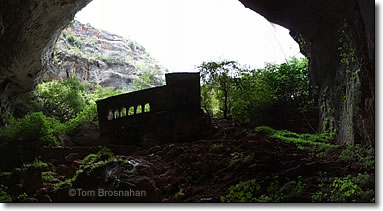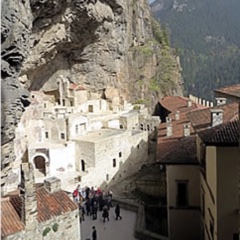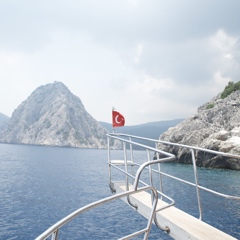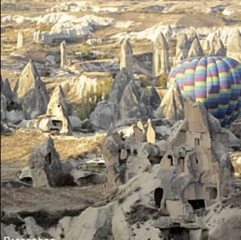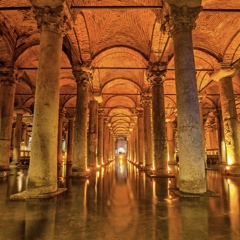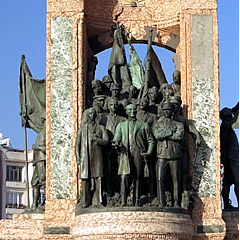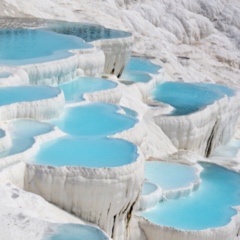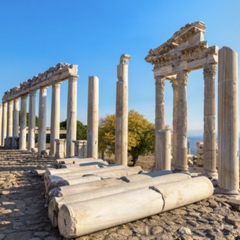The Caves of Heaven and Hell (Cennet ve Cehennem), 1.4 km (1 mile) northwest of Narlıkuyu on Turkey’s Mediterranean coast (map), are worth a visit as natural phenomena, and also as historical points of interest.
As you approach the caves along the access road from the Mediterranean coastal highway, you’ll see the lofty walls of a huge Temple of Zeus erected here in homage to the king of the gods who features prominently in the ancient myths related to the caves.
Park you car near the temple, make sure you’re provided with a bottle of liquid to drink, enter the archeological site, and descend the 288 steps to the Byzantine chapel in the cave’s mouth.
Look upon it as a nature walk: old trees, birdsong, seasonal flowers. The air cools as you go down along the mostly shady path to the great mouth of the cave, where the air is really cool and damp.
In the cool, damp atmosphere of the cave mouth, the rough stone steps can be slippery. Walk with care! If you are injured, your mobile phone probably won’t work in the cave, and it will take time for help to arrive.
Another 70 steps take you down to a flat area below the chapel, where it’s blissfully cool, and a table and a few chairs provide a place to rest.
Yet another 97 steps and you are down into the cave itself, still with enough natural and artificial light that you can walk without a flashlight/torch.
Heading up and out of the cave is daunting: over 400 steps to the rim! The restaurant on the rim there provides good cold drinks, snacks and light meals, and a shady, breezy place to sit and recover.
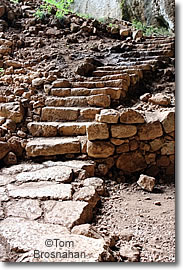 |
| Some of the hundreds of steps. |
The Cavern of Hell(Cehennem), 100 meters uphill from Heaven, is a smaller depression with steeper sides, 30 meters in diameter and 120 meters deep. Luckily, its walls are too steep to allow access, so you can’t descend into it (in other words, you can’t Go To Hell).
Of course, the two caves figure prominently in ancient Greek myths, according to which Typhon, a fire-breathing 100-headed dragon, battles Zeus, king of the gods. Zeus is defeated and imprisoned in these chasms. Hermes and Pan rescue Zeus, who goes after Typhon again, defeats him and buries him in the earth, but Typhon’s fire-breath issues from the earth as what we know as Mt Etna, the active volcano in Italy.
—by Tom Brosnahan
| Kızkalesi |  |



